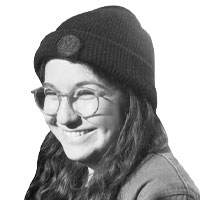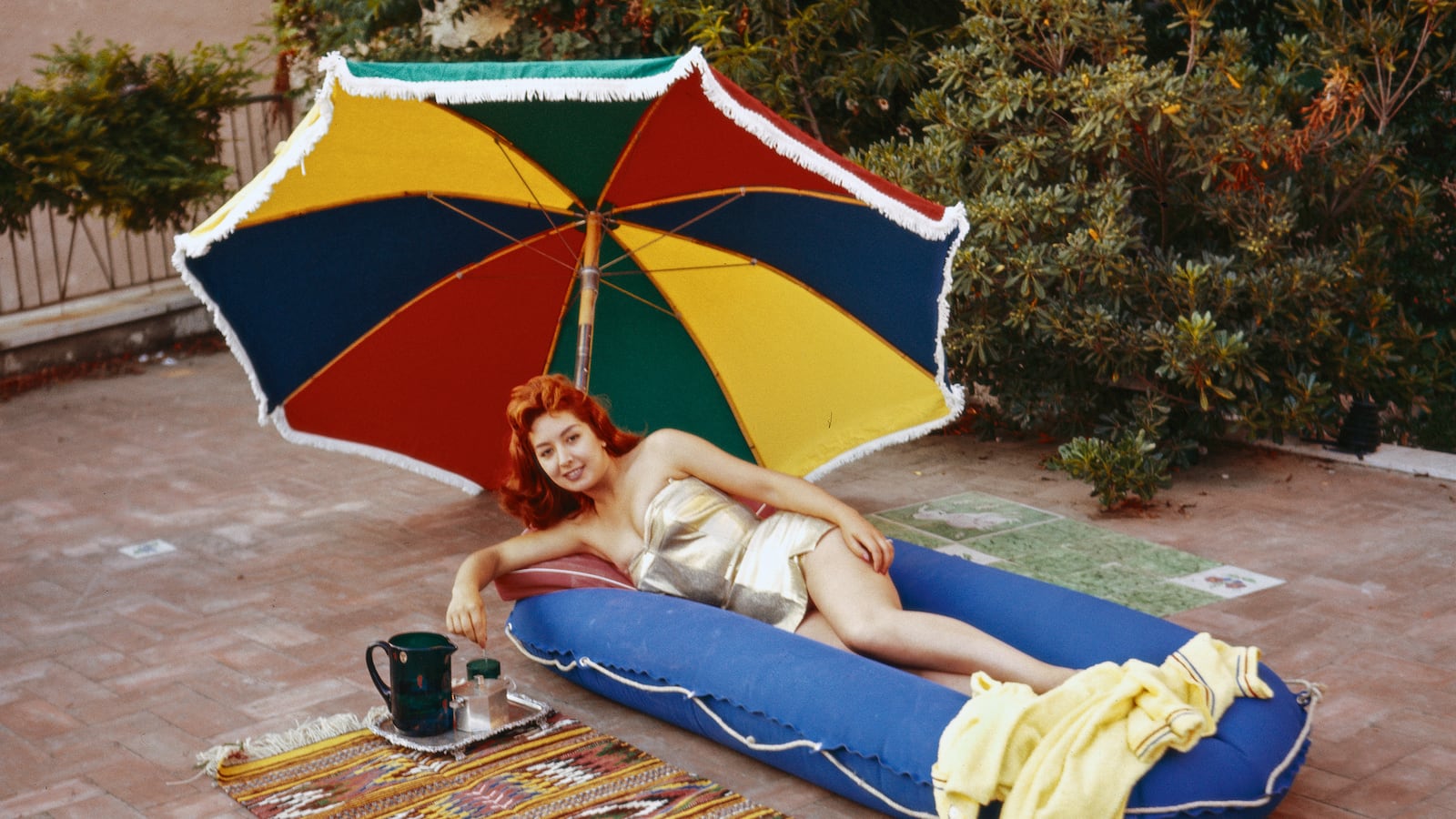The first image in the new Parisian exhibition Un Moment Si Doux (A Sweet Moment) is a photo of a man lying on a bed; behind him, two walls of brilliant turquoise/blue meet over his left shoulder. Upon closer inspection, the image, taken in Vietnam in 1972, is grainy, almost hazy. Though the scene is spare, the effect is powerful: bright, solemn, contemplative. Such is the visual output of French photographer Raymond Depardon. A compendium of moments he captured the world over are displayed in their greatest breadth yet at the Grand Palais, adjacent to the annual Paris Photo festival occurring this week.
VIEW PHOTOS: Depardon Captures the “Sweet Moments”

Curator Hervé Chandès selected what he deems Depardon’s color “moments”—images where color is truly the element that brings out the allure of the image. “Raymond Depardon and color photography are indissociable,” Chandès says emphatically.
The exhibition presents 161 color photographs—all new prints—the majority of which have remained unpublished. Hung more or less chronologically from the late 1950s to the present day, most images were taken in far-flung places relative to Depardon’s rural upbringing in Villefranche-sur-Saône, in the Rhône. Filching a 6x6 Lumière from his brother, Depardon’s early pictures were very localized: his mother, the animals, and equipment on his parents’ farm. He moved to Paris at age 19, and became a photo assistant. In 1960 he joined the Dalmas photo agency, initially photographing local news and sports events, but he moved on to foreign reporting, notably covering the war in Algeria. He created his own agency, Gamma, in 1966, though he later left to join Magnum.
“I feel confident about anodyne things, banal things, which become universal. I love understated moments,” Depardon says. He summarizes his photo philosophy thusly: “I take a tiny item from page six and put it at the forefront of page one.”
Among the images showcased are several vignettes, both vintage and recent. One, taken in Argentina in 2012, is of a homeless girl outside a store, who is watching over four dogs and sitting below a sign that reads, not insignificantly, por la otra puerta (“through the other door”). In a nearby vignette, taken decades earlier, clusters of people leave the post-earthquake, debris-strewn scene in Chasquitambo, Peru. The shapes of their backs and hats are a tragic procession, as two children look back into the camera. Depardon is known and celebrated in France for being a documentary filmmaker as well as a photo reporter, and one can sense in these vignettes a film director’s inclination to linger, to get a longer look.
His images depict views of broken cities and isolated towns—sometimes they seem one in the same. His 1978 series in Beirut is at once incredibly bright and exceedingly ominous. A woman in a cupcake of a wedding dress, with her wedding party behind her, stands against a frighteningly bruise-hued sky. A bright blue storefront, heavily pockmarked with gunfire, is the backdrop to a wrecked, bullet-bashed car. Several images are people-free: just radiant, apathetic sunlight falling over char-grilled remains of torn furniture or broken signs. A series taken in Glasgow incarnates the bleakest of urban landscapes: children in white knee socks, scampering and blowing bubble gum among drab ashy streets and graffitied walls. In one image, a crouched woman in a dark alley drinks from a bottle marked “El Dorado,” while boxes burn nearby. (The Sunday Times commissioned Depardon to shoot in Glasgow in 1980, but never published these images.)
The melancholy bleeds into the beautiful, without emptily aestheticizing for effect. Rather, Depardon manages to highlight the poetic quality of detritus, of crumbling facades, of quiet rural settings and desolate city life alike. The consequences of a ravaged society, be they due to war or poverty or ideological upheaval, are infused with more pathos than more overtly politicized images.
In the last decade, Depardon has renounced reportage. Last year he traveled to Ethiopia, Chad, Bolivia, and the U.S. to realize new work for the exhibition, which he printed in a large-scale format. In his more recent work, the sun-baked images show dignified postures and crisp collared shirts of passers-by as they walk before bright facades. Rather than using the oft-hallowed approach of capturing the “decisive moment” and walking on, Depardon says that, “I make the rounds with my Rolleiflex. People see me but then forget about me.” For him, it’s not just about going unseen, but also foreseeing. “A photo is constituted by chance,” Depardon says. “You have to be early, to anticipate the event. You don’t quite know what you want, only that you want something, as if the photo were already an unconscious thought in your head.” If only all unconscious thoughts yielded such remarkable results.
Raymond Depardon: Un Moment Si Doux is on display at Grand Palais, Paris until February 10, 2014.






